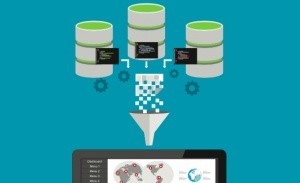Data Mining techniques Start the discussion!
New Category!
Thinking of a Best Practice which could fit in this category? Tell us

What is Data Mining?
Data mining is the practice of analyzing large existing databases with the aim of generating new information. Usually the objective will be to spot certain patters or relationships to help you solve problems by means of data analytics. In other words, data mining is for transferring raw data to information you can use. Obviously there are techniques you can use to best suit your information needs.
Data Mining Techniques
Association
This is probably the most straightforward and most familiar data mining technique. This technique entails making a simple correlation between items- usually 2 or more and often of the same type. This is to facilitate pattern identification. E.g. you might spot that when a customer buys bread, they always also buy milk, which therefore suggests that the next time a customer buys milk, they will possibly also want to buy bread.
Classification
Classification can be used to muster up an idea of the type of item or the type of consumer by describing a number of attributes that relate to a particular class. E.g. You are able to easily classify different types of dogs (golden retriever) by identifying different attributes (size, color, hair length.)
Clustering
By analyzing one or more classes or attributes, you’re able to group together individual pieces of data to come up with conclusions. At a basic level, clustering is using one of more of these attributes as a base for identification of a cluster of results that correlate with one another. Clustering can be a really useful way of identifying different information due to the fact it correlates with other examples, so therefore you’re able to spot where the ranges and similarities agree.
Prediction
This entails making predictions about past events or instances, and is usually used in combination with other data mining techniques.
Sequential Patterns
This technique is more often used over data that is long term as opposed to short term. It is used to identify trends, similar events, or regular occurrences. E.g. using customer data, you could identify that customers buy a certain collection of items together at certain times of the year. In an app or a website, you can utilize this information to suggest to them items to add to their baskets based on previous data related to their buying frequency or purchasing history.
Decision Trees
These can be used to support the utilization and selection of specific data, or can be used as a part of the selection criteria. In a decision tree, you begin with a basic question that has 2 or more answers. Each answer will then lead to another question to help identify or classify the data so it can be categorized or for a prediction to be made on each answer.
Why is Data Mining Useful?
Data Mining is useful primarily for companies who have a strong consumer focus. With data mining, companies can use information found to make decisions about pricing, product positioning, and daily activities. For example, companies may adjust their strategies in certain areas dependent on what they have discovered through data mining. Studies into who their customers are for example, may trigger marketing strategy adjustments and the means through which they reach customers. Ultimately, all data mining will be done with the bottom line in mind.
If you’d like to read more on Data Mining, please visit:



